| Weight | 1 lbs |
|---|---|
| Dimensions | 9 × 5 × 2 in |
| host | mouse |
| isotype | IgG |
| clonality | monoclonal |
| concentration | concentrate, predilute |
| applications | IHC |
| reactivity | human |
| available size | 0.1 mL, 0.5 mL, 1 mL concentrated, 7 mL prediluted |
rabbit anti-Myoglobin monoclonal antibody (ZR69) 6280
Price range: $160.00 through $528.00
Antibody summary
- Rabbit monoclonal to Myoglobin
- Suitable for: Immunohistochemistry (formalin-fixed, paraffin-embedded tissues)
- Reacts with: Human
- Isotype:IgG
- Control: Skeletal muscle
- Visualization: Cytoplasmic
- 0.1, 0.5, 1.0 mL concentrated, 7 mL prediluted
rabbit anti-Myoglobin monoclonal antibody ZR69 6280
| target relevance |
|---|
| Protein names Myoglobin (Nitrite reductase MB) (EC 1.7.-.-) (Pseudoperoxidase MB) (EC 1.11.1.-) |
| Gene names MB,MB |
| Protein family Globin family |
| Mass 17184Da |
| Function FUNCTION: Monomeric heme protein which primary function is to store oxygen and facilitate its diffusion within muscle tissues. Reversibly binds oxygen through a pentacoordinated heme iron and enables its timely and efficient release as needed during periods of heightened demand (PubMed:30918256, PubMed:34679218). Depending on the oxidative conditions of tissues and cells, and in addition to its ability to bind oxygen, it also has a nitrite reductase activity whereby it regulates the production of bioactive nitric oxide (PubMed:32891753). Under stress conditions, like hypoxia and anoxia, it also protects cells against reactive oxygen species thanks to its pseudoperoxidase activity (PubMed:34679218). {ECO:0000269|PubMed:30918256, ECO:0000269|PubMed:32891753, ECO:0000269|PubMed:34679218}. |
| Catalytic activity CATALYTIC ACTIVITY: Reaction=Fe(III)-heme b-[protein] + nitric oxide + H2O = Fe(II)-heme b-[protein] + nitrite + 2 H(+); Xref=Rhea:RHEA:77711, Rhea:RHEA-COMP:18975, Rhea:RHEA-COMP:18976, ChEBI:CHEBI:15377, ChEBI:CHEBI:15378, ChEBI:CHEBI:16301, ChEBI:CHEBI:16480, ChEBI:CHEBI:55376, ChEBI:CHEBI:60344; Evidence={ECO:0000269|PubMed:32891753}; PhysiologicalDirection=right-to-left; Xref=Rhea:RHEA:77713; Evidence={ECO:0000305|PubMed:32891753}; CATALYTIC ACTIVITY: Reaction=H2O2 + AH2 = A + 2 H2O; Xref=Rhea:RHEA:30275, ChEBI:CHEBI:13193, ChEBI:CHEBI:15377, ChEBI:CHEBI:16240, ChEBI:CHEBI:17499; Evidence={ECO:0000269|PubMed:34679218}; |
| Subellular location SUBCELLULAR LOCATION: Cytoplasm, sarcoplasm {ECO:0000269|PubMed:30918256}. |
| Structure SUBUNIT: Monomeric. {ECO:0000250|UniProtKB:P02185}. |
| Involvement in disease DISEASE: Myopathy, sarcoplasmic body (MYOSB) [MIM:620286]: An autosomal dominant, slowly progressive muscle disorder manifesting in adulthood with proximal and axial weakness that progresses to involve distal muscles. Patients may lose ambulation after a long disease course, and some individuals develop respiratory or cardiac symptoms. Muscle pathology features include sarcoplasmic bodies in skeletal and cardiac muscles. {ECO:0000269|PubMed:30918256, ECO:0000269|PubMed:34679218, ECO:0000269|PubMed:35527200}. Note=The disease is caused by variants affecting the gene represented in this entry. |
| Target Relevance information above includes information from UniProt accession: P02144 |
| The UniProt Consortium |
Data
 |
| Formalin-fixed, paraffin-embedded human skeletal muscle stained with anti-myoglobin antibody using peroxidase-conjugate and DAB chromogen. Note the cytoplasmic staining of skeletal muscle fibers. |
Publications
| pmid | title | authors | citation |
|---|---|---|---|
| We haven't added any publications to our database yet. | |||
Protocols
| relevant to this product |
|---|
| IHC |
Documents
| # | SDS | Certificate | |
|---|---|---|---|
| Please enter your product and batch number here to retrieve product datasheet, SDS, and QC information. | |||
Only logged in customers who have purchased this product may leave a review.
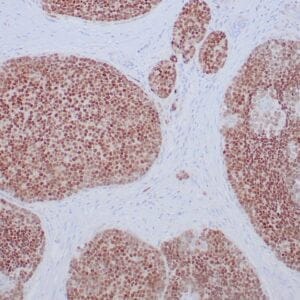
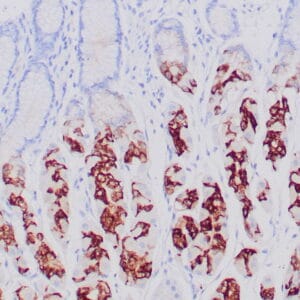
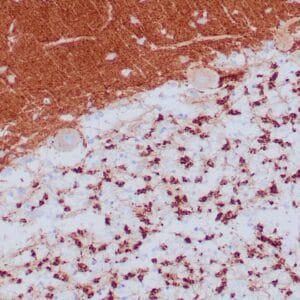
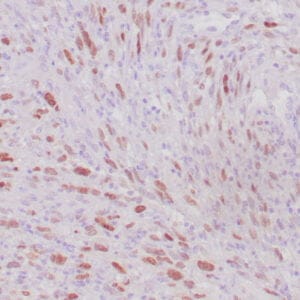

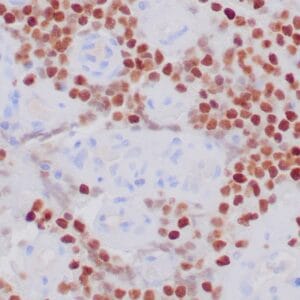

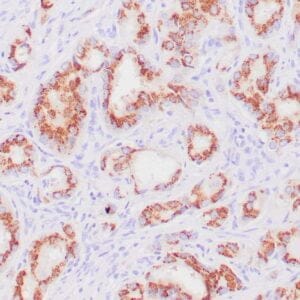
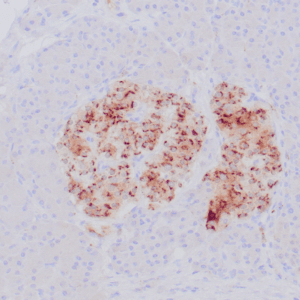
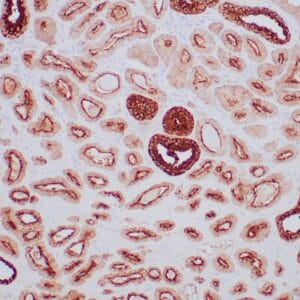
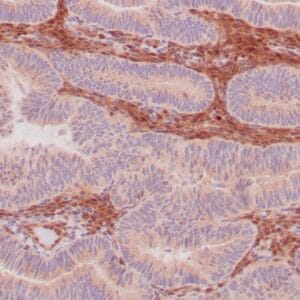
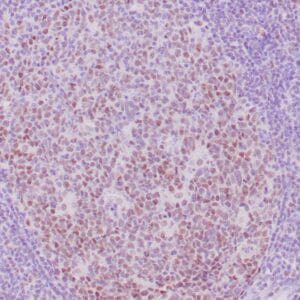
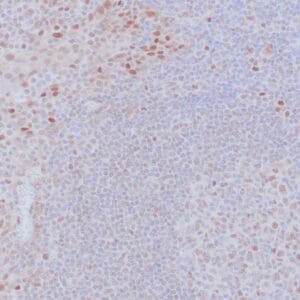

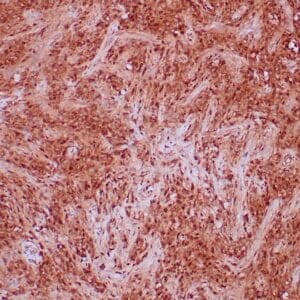
Reviews
There are no reviews yet.